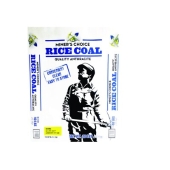
 2
2




 2
2




Permaculture...picking the lock back to Eden since 1978.
Pics of my Forest Garden




 3
3




"The rule of no realm is mine. But all worthy things that are in peril as the world now stands, these are my care. And for my part, I shall not wholly fail in my task if anything that passes through this night can still grow fairer or bear fruit and flower again in days to come. For I too am a steward. Did you not know?" Gandolf




Marco Banks wrote:Whatever benefits you get from "charging" your biochar with nutrients (nitrogen, others) will be a one-time benefit. As soon as you put that biochar into the soil, those nutrients will be cycled into the soil.
The long-term benefits of biochar are as a home for microbial life.
Think of it as a reef. If you take an old school bus (or battleship or pile of concrete lampposts . . .) and sink it out into the tropical ocean, in no time there will a community of things that attach themselves to said school bus. In 25 years, you'll barely be able to know that it was a school bus --- it'll be a wonderful mess of corral and critters, teaming with life. The lifeless hunk of matter becomes a reef that attracts all manor of other sea life.
Biochar is a reef. It attracts and holds life. Tiny critters being eaten by bigger critters being eaten by even bigger ones.
 1
1








 1
1




Sue Monroe wrote:If you put "bare", unactivated biochar into the soil and then plant veggies (for instance), the biochar will draw the nutrients out of the soil for a couple of years to activate itself, leaving the veggies without much nutrition for growing, and the crop will be poor.
By activating the biochar for a while, and then adding it to the soil, you get a two-year head start on the soil improvement.
I think the previous poster exaggerated how much the plants will draw nutrients from the biochar -- it's not an all-or-nothing situation. That's the whole point of using biochar.
 4
4




Permaculture...picking the lock back to Eden since 1978.
Pics of my Forest Garden
 4
4




Priscilla Stilwell wrote:
I don't understand that. If the nutrients are immediately released into the soil, what's the point of charging the biochar at all?
"The rule of no realm is mine. But all worthy things that are in peril as the world now stands, these are my care. And for my part, I shall not wholly fail in my task if anything that passes through this night can still grow fairer or bear fruit and flower again in days to come. For I too am a steward. Did you not know?" Gandolf




 1
1




 1
1




Sue Monroe wrote:Why can't you charge the biochar with microbes AND nutrients?
Permaculture...picking the lock back to Eden since 1978.
Pics of my Forest Garden
 1
1




 3
3




Sue Monroe wrote:Why can't you charge the biochar with microbes AND nutrients?
It only seems polite if you're giving them a new home, that you should have dinner delivered, too. It's really tiring to move into a new place just to find that you left all the food in the storage unit that closed half an hour ago.

"The rule of no realm is mine. But all worthy things that are in peril as the world now stands, these are my care. And for my part, I shall not wholly fail in my task if anything that passes through this night can still grow fairer or bear fruit and flower again in days to come. For I too am a steward. Did you not know?" Gandolf




Sue Monroe wrote:That sounds fine as long as the wind doesn't blow it away. Do you lay something on top of it to prevent that?
Permaculture...picking the lock back to Eden since 1978.
Pics of my Forest Garden

| I agree. Here's the link: http://stoves2.com |




